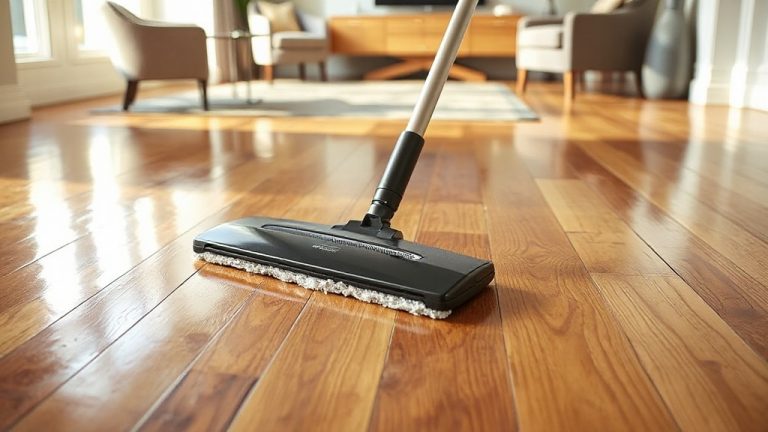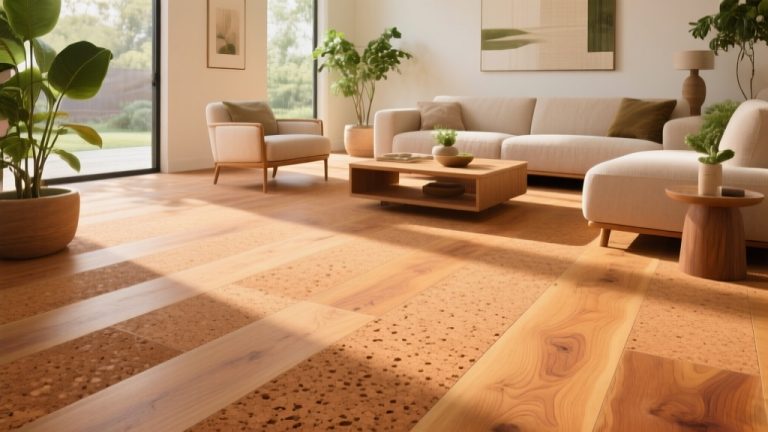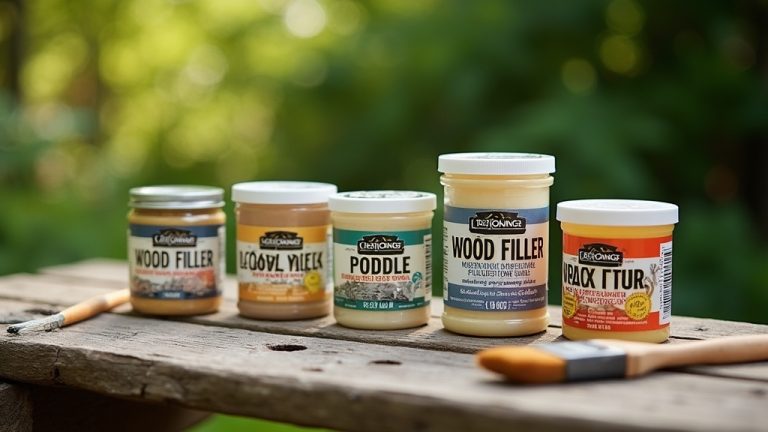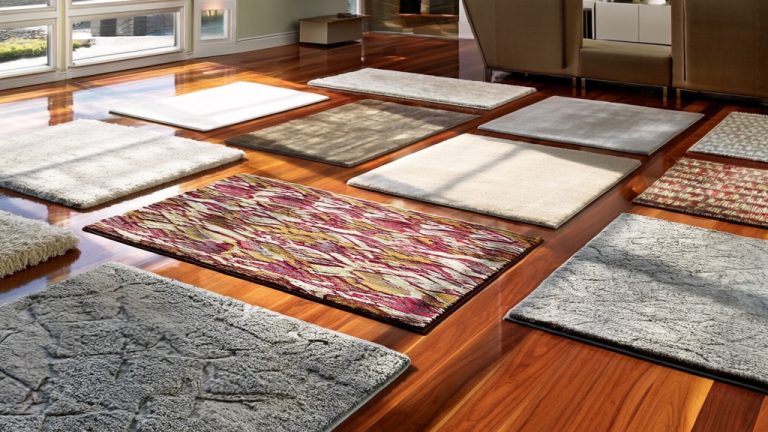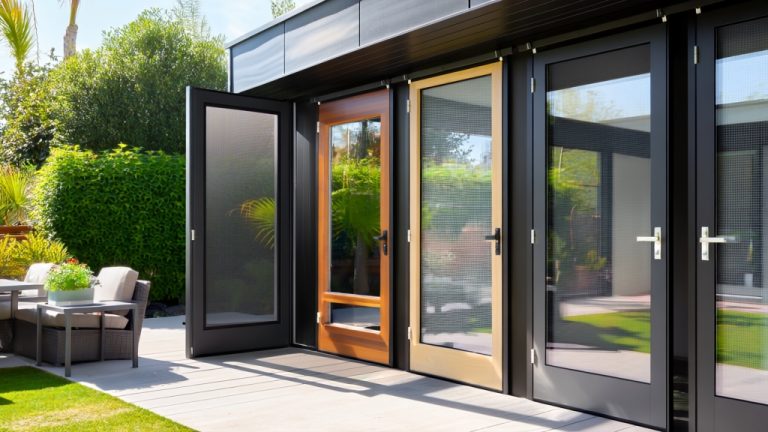Acacia Engineered Hardwood Flooring Reviews: Eco-Friendly
If you want durable, stylish flooring, Acacia engineered hardwood is a solid choice. It features a multi-ply Baltic birch core and a genuine Acacia top layer with a 2mm wear surface, offering strong resistance to dents and scratches.
Its varied grain and warm tones add natural charm, while aluminum oxide finishes protect durability. Installation is flexible, and plantation-grown wood supports sustainability. Learn how its construction, maintenance, and aesthetics make it a smart flooring investment.
- Sample that fits in a 6″ x 9″ envelope from WeShipFloors(dot)com
- Glue – Nail – Float
- Tongue & Groove
Key Takeaways
- Acacia engineered hardwood offers a durable 2mm wear layer with a Janka hardness of 1310, resisting dents and scratches well.
- Its multi-ply Baltic birch core ensures stability and minimizes warping from humidity changes.
- Prefinished surfaces with aluminum oxide provide strong scratch resistance and long-lasting finish protection.
- Aesthetic options include rich natural colors, varied grain patterns, and multiple textures like hand-scraped and distressed.
- Environmentally friendly production with plantation sourcing and FSC certification, priced affordably compared to exotic hardwoods.
Product Specifications and Construction
When selecting engineered hardwood flooring, you’ll find a variety of dimensions and construction details designed to suit different design needs and installation scenarios. Plank widths range from narrow 3 5/8″ to wide 7 1/2″.
This Acacia flooring offers a hardness and beauty that make it a popular choice for durable, attractive surfaces. Engineered hardwood flooring offers plank widths from 3 5/8″ up to 7 1/2″ to fit diverse design styles.
Thickness typically measures around 1/2″, with some at 3/8″. Lengths vary widely—from 12″ up to 70″—allowing for versatile layouts. To maintain longevity, it is important to ensure the wood is free of contaminants before installation.
Engineered planks feature a multi-ply Baltic birch plywood core, enhancing stability. The wear layer is generally 2mm thick, influencing refinishing options. Surfaces come prefinished with 10 to 11 coats of Aluminum Oxide or UV-cured lacquer, providing scratch resistance.
Four-sided tongue and groove profiles make installation straightforward, and micro-beveled edges add aesthetic appeal while hiding minor imperfections.
Durability and Hardness Assessment
Beyond the dimensions and construction details, the durability and hardness of engineered acacia flooring play a vital role in its performance and longevity.
With a Janka hardness rating of 1310, acacia offers strong resistance to dents and impact, surpassing many hardwoods like oak. Its cross-laminated layers enhance dimensional stability, reducing warping from humidity changes.
Additionally, acacia flooring is water and mold resistant, making it ideal for kitchens and humid climates. Durable finishes like aluminum oxide protect against scratches and wear, while wire-brushed textures help mask minor surface damage.
Moreover, proper maintenance, including regular cleaning and avoiding harsh chemicals, helps prolong the lifespan of the floor and maintain its scratch and abrasion resistance.
| Feature | Benefit | Practical Tip |
|---|---|---|
| Janka Hardness 1310 | Resists dents and dings | Ideal for high-traffic areas |
| Cross-laminated Layers | Limits expansion and contraction | Suitable for basements and kitchens |
| Aluminum Oxide Finish | Scratch and abrasion resistance | Use furniture pads to prolong life |
Installation Methods and Tips
Although engineered hardwood flooring offers versatility in installation, selecting the right method is essential for a durable, stable finish. You can choose from floating, glue-down, nail-down, or staple-down methods.
Floating works well on various subfloors without attachment, while glue-down requires a dry, tested concrete base and careful adhesive application. Nail- and staple-down methods suit wood subfloors; pre-drill holes and angle fasteners above the plank tongue every few inches.
Always maintain a ¼” to ½” expansion gap around the room with spacers to prevent buckling. Stagger end joints by 6–8 inches for stability. Use a tapping block to avoid damaging edges during installation, and clean any glue spills immediately.
Finally, install transition strips and baseboards to finish, securing them to walls, not flooring, to preserve expansion space. To keep your floor looking its best, regular cleaning with a pH-neutral hardwood floor cleaner helps prevent surface damage and preserves its finish.
Aesthetic Qualities and Design Options
Since engineered hardwood flooring features a genuine Acacia wood top layer, you get an authentic look that brings natural warmth and richness to your space. Its rich color palette ranges from deep browns and cinnamon to honey and caramel, blending effortlessly with rustic or contemporary interiors.
Proper planning and patience during installation ensure you achieve durable, high-quality results with lasting beauty. The wood grain varies distinctly, offering swirls, knots, and rustic marks that add depth and visual interest.
You can choose from smooth, hand-scraped, or distressed finishes to match your style needs. This grain pattern not only enhances the visual appeal but also helps mask minor wear and tear over time.
Wide planks create a bold statement and can make rooms feel larger. Plus, mixing planks before installation lets you avoid repetitive patterns, resulting in a dynamic, natural floor.
Using protective measures during installation helps preserve the floor’s finish and maintains its aesthetic quality. Acacia’s adaptable tones and textures make it easy to coordinate with diverse decor, ensuring lasting design harmony.
- This listing is for 2 pieces of wood floor samples 8″
- Grade: Natural Small Leaf Acacia
- 25 Year Surface/Lifetime Structure
Environmental Impact and Price Considerations
While the visual appeal of acacia engineered hardwood flooring can transform your space, understanding its environmental impact and price helps you make a well-rounded choice.
Acacia grows quickly on plantations, reducing deforestation and chemical use. Manufacturing often uses biomass energy, lowering carbon emissions. Look for FSC certification and low-VOC products for safety and sustainability.
Plantation cultivation not only ensures a sustainable supply but also supports environmentally friendly practices. Additionally, choosing flooring with certifications like CARB2 guarantees adherence to strict environmental and indoor air quality standards.
| Factor | Details |
|---|---|
| Growth | Fast-growing, plantation sourced |
| Environmental Impact | Low water, biomass energy in manufacturing |
| Chemical Safety | Low formaldehyde, meets CARB/EPA standards |
| Price | Generally more affordable than other exotics |
Frequently Asked Questions
Can Acacia Engineered Hardwood Be Refinished if Damaged?
You can refinish engineered hardwood if its wear layer is thick enough, typically 3mm or more allows for sanding and refinishing. If it’s thinner than 2mm, you’ll only manage light scuff-sanding without risking damage.
Always have a professional assess the floor’s veneer thickness before starting. For minor damage, screening and recoating or spot repairs might be better options to refresh your floor without sanding through the veneer.
How Does Acacia Flooring Perform With Radiant Heating Systems?
Think of your Acacia flooring as a seasoned dancer gracefully adjusting to the warm rhythm of radiant heating beneath it. Because engineered Acacia is crafted with layered veneers, it handles temperature changes like a pro, resisting warping or cracking.
You’ll want to choose products rated for radiant heat and install them properly with acclimation and approved adhesives. This way, your floor not only stays beautiful but also helps maintain cozy, energy-efficient warmth throughout your home.
What Maintenance Products Are Recommended for Acacia Hardwood Floors?
You should use commercial cleaners made for hardwood floors, like Bona or Simple Green Multi-Surface Floor Care, to keep your acacia hardwood looking great without residue or damage. Avoid cleaners for vinyl or laminate, as they can harm the finish.
Occasionally, apply professional wood floor products or urethane refreshers like Bona Clean & Refresh to maintain shine without over-polishing. Always pair cleaning with daily sweeping or vacuuming using soft attachments to protect the surface.
Are There Specific Subfloors that Acacia Engineered Flooring Should Not be Installed on?
Imagine installing Acacia engineered flooring on a soggy moor; it’s just as unwise. You shouldn’t lay it on subfloors with excessive moisture, uneven surfaces, or those below grade without vapor barriers.
Avoid soft, damaged wood or unclean, dusty bases, too. Concrete must be fully cured, dry, and smooth, with proper adhesives and vapor retarders. Nail-down methods only suit sturdy wood subfloors, while glue-down works best on concrete.
Does Acacia Flooring Produce Noticeable Noise or Creaking After Installation?
You might notice some noise or creaking from engineered hardwood, including Acacia, especially if the subfloor isn’t perfectly flat or moisture isn’t controlled. Seasonal changes can cause wood expansion and contraction, leading to temporary sounds.
Improper installation, like loose nails or incorrect fastener angles, often causes squeaks. To reduce noise, make certain proper subfloor prep, use correct fastening techniques, and test moisture levels before installation.
Eco-Friendly Flooring with Timeless Appeal
You’ll find Acacia engineered hardwood flooring balances striking natural beauty with impressive durability, making it both a stylish and practical choice. While its rich grain patterns elevate any space, the engineered construction guarantees easier installation and greater stability compared to solid wood.
Though it may come at a higher price, the environmental benefits and long-lasting quality often outweigh the cost. In short, Acacia offers a blend of elegance and resilience that suits your home perfectly.
- ORIGINS COLLECTION: Our flooring showcases the exquisite character of acacia wood, renowned for its…
- INSTALLATION & MAINTENANCE: Designed for easy installation, thanks to a precise milling process for…
- SUSTAINABILITY: It is at the core of our values, which is why our flooring is responsibly sourced…
Last update on 2026-01-07 / Affiliate links / Images from Amazon Product Advertising API






